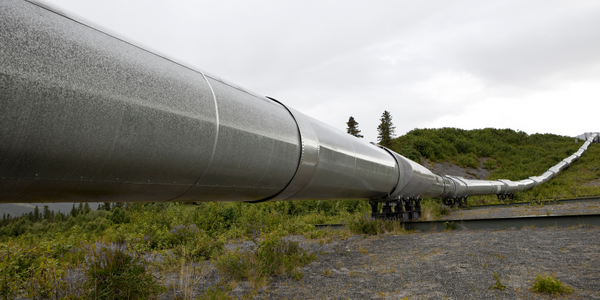Customer Company Size
Mid-size Company
Region
- America
Country
- United States
Product
- LogicMonitor’s SaaS-Based Monitoring Platform
Tech Stack
- SaaS
- API
Implementation Scale
- Enterprise-wide Deployment
Impact Metrics
- Cost Savings
- Productivity Improvements
- Customer Satisfaction
Technology Category
- Platform as a Service (PaaS) - Connectivity Platforms
Applicable Functions
- Business Operation
Use Cases
- Remote Asset Management
- Predictive Maintenance
Services
- Cloud Planning, Design & Implementation Services
- System Integration
About The Customer
iVision is an Atlanta-based IT services company that delivers managed services to nearly two dozen enterprises that have operations across the globe. In all, iVision monitors and manages nearly 2100 devices and 3000 to 4000 virtual machines for its clients. iVision’s service level agreements (SLAs) with customers are based on mean time to acknowledgement, so proactive monitoring of network events and activity is critical. Consequently, iVision needs a monitoring platform that can discover and alert engineers to events on a variety of platforms deployed across multiple customer environments.
The Challenge
As iVision’s managed services business grew, the inflexibility of its existing cloud-based monitoring solution became an inhibitor. The legacy monitoring system lacked the flexibility to set individual monitoring standards for different managed clients. iVision’s engineers struggled to manage multiple clients from a single pane of glass, which threatened the company’s ability to maintain SLAs. Bringing the infrastructure of a new customer under management within the existing monitoring tool was an additional sticking point. It took iVision engineers at least a month to get a new network properly instrumented. Integration with iVision’s IT service management platform was also poor. The incumbent monitoring tool’s connection points with iVision's existing service desk dropped intermittently, which led to slower response times by iVision support staff. In addition, no one paid attention to the legacy system’s dashboards because they were too difficult to configure and keep up-to-date.
The Solution
iVision adopted LogicMonitor’s cloud-based monitoring platform as a replacement for its incumbent tool. Deployment was faster than expected, largely because LogicMonitor’s lightweight data collector was so simple to deploy and set up. What had been some of the most difficult aspects of deploying monitoring services with the legacy tools were now some of the easiest, due to the automated discovery and management configuration capabilities of the LogicMonitor solution. With the introduction of LogicMonitor, iVision immediately reaped the benefits of rapid provisioning. Engineers were able to add 1800 devices into monitoring within a couple of days, which was a pleasant surprise across the organization. The company also found that the time it took to onboard a new customer, which had been nearly a week on average using the older platform, was reduced to just a single day. LogicMonitor also demonstrated its ability to add support for new platforms rapidly. When one customer was using a storage platform for which the monitoring tool did not have a connector, LogicMonitor developers were able to deliver one to iVision within three days.
Operational Impact
Quantitative Benefit

Case Study missing?
Start adding your own!
Register with your work email and create a new case study profile for your business.
Related Case Studies.

Case Study
Remote Monitoring & Predictive Maintenance App for a Solar Energy System
The maintenance & tracking of various modules was an overhead for the customer due to the huge labor costs involved. Being an advanced solar solutions provider, they wanted to ensure early detection of issues and provide the best-in-class customer experience. Hence they wanted to automate the whole process.
.png)
Case Study
Improving Vending Machine Profitability with the Internet of Things (IoT)
The vending industry is undergoing a sea change, taking advantage of new technologies to go beyond just delivering snacks to creating a new retail location. Intelligent vending machines can be found in many public locations as well as company facilities, selling different types of goods and services, including even computer accessories, gold bars, tickets, and office supplies. With increasing sophistication, they may also provide time- and location-based data pertaining to sales, inventory, and customer preferences. But at the end of the day, vending machine operators know greater profitability is driven by higher sales and lower operating costs.

Case Study
Predictive Maintenance for Industrial Chillers
For global leaders in the industrial chiller manufacturing, reliability of the entire production process is of the utmost importance. Chillers are refrigeration systems that produce ice water to provide cooling for a process or industrial application. One of those leaders sought a way to respond to asset performance issues, even before they occur. The intelligence to guarantee maximum reliability of cooling devices is embedded (pre-alarming). A pre-alarming phase means that the cooling device still works, but symptoms may appear, telling manufacturers that a failure is likely to occur in the near future. Chillers who are not internet connected at that moment, provide little insight in this pre-alarming phase.

Case Study
Remote Wellhead Monitoring
Each wellhead was equipped with various sensors and meters that needed to be monitored and controlled from a central HMI, often miles away from the assets in the field. Redundant solar and wind generators were installed at each wellhead to support the electrical needs of the pumpstations, temperature meters, cameras, and cellular modules. In addition to asset management and remote control capabilities, data logging for remote surveillance and alarm notifications was a key demand from the customer. Terra Ferma’s solution needed to be power efficient, reliable, and capable of supporting high-bandwidth data-feeds. They needed a multi-link cellular connection to a central server that sustained reliable and redundant monitoring and control of flow meters, temperature sensors, power supply, and event-logging; including video and image files. This open-standard network needed to interface with the existing SCADA and proprietary network management software.









